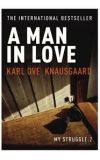
12 May 2013 03:40:04
The events that make up much of A Man in Love – the second part of the sequence – are outlined early in the first, A Death in the Family. Karl Ove Knausgaard leaves his wife, moves to Stockholm, falls in love with Linda and quickly has three children. In A Death in the Family, this is a straight story, a linear narrative; but in A Man in Love the story folds in on itself, passes through doors into the past and through portals into the future. It is a wholly fluid narrative structure, one that allows Knausgaard to explore the nature of self and selfhood in light of both romantic and paternal love.
It's here where controversy is inevitable. Knausgaard is brutally, painstakingly, viciously truthful – or at least appears to be – about his relationship with his wife and children. Linda is mostly presented as a stubborn, lazy, self-obsessed depressive, while his children are often seen as inconveniences, ignored and abandoned, or used as weapons in domestic disputes. "Saying what you believe others want to hear is of course a form of lying," Knausgaard writes and in doing so seems to revel in depicting himself as a narcissist, coward and single-minded egotist.
But within this truthfulness, within this disclosure, Knausgaard also constructs a sort of safety net. The peripatetic narrative, the bends in time, allows Knausgaard a way to show the multifaceted nature of personality, the multitudinous I – and to give himself a sort of alibi from the past.
The Karl Oves who populate this novel are slippery, illusory. They have the same voice, but not the same opinions; the same drives, but different goals. They are, in so many ways, fictional creations no matter how much they are based on fact. The rejected, lovelorn Knausgaard, the "feminised" Knausgaard with the internal "furious 19th century man", the Knausgaard who can talk about BabyBjörns and push a buggy through Malmö are unified only by language: simple, plain, conversational, language, occasionally bordering on cliche. The Proustian comparison does not hold in terms of complexity of sentence: A Man in Love is invitingly written, designed for immediacy – or perhaps even invisibility – rather than obvious beauty.
The simplicity of the prose can give the novel the feel of confession at times; while at others, especially in scenes of dialogue, it can feel wholly fictional. There are so many struggles within My Struggle; but in A Man in Love it seems the true wrangle is between what is real and what is not – whether love is as much of a fiction as a cogent sense of identity.
In Philip Roth's The Counterlife Nathan Zuckerman ruminates on "the kind of stories that people turn life into, the kind of lives people turn stories into". And this is how A Man in Love feels: as invented and as real as life itself. Compelling, rewarding, maddening and often breathtaking, A Man in Love is a bold exploration of how we create and curate our lives.

